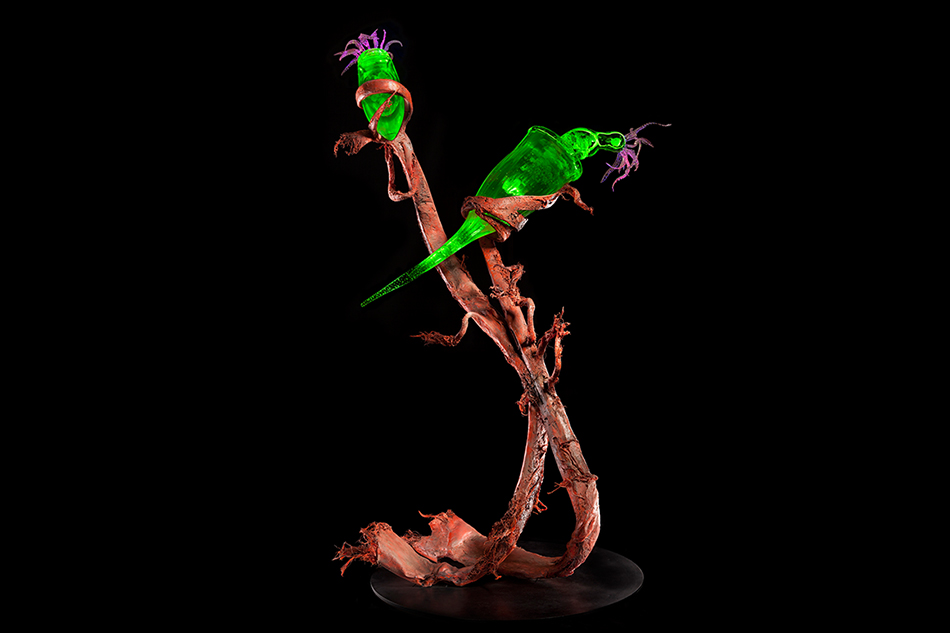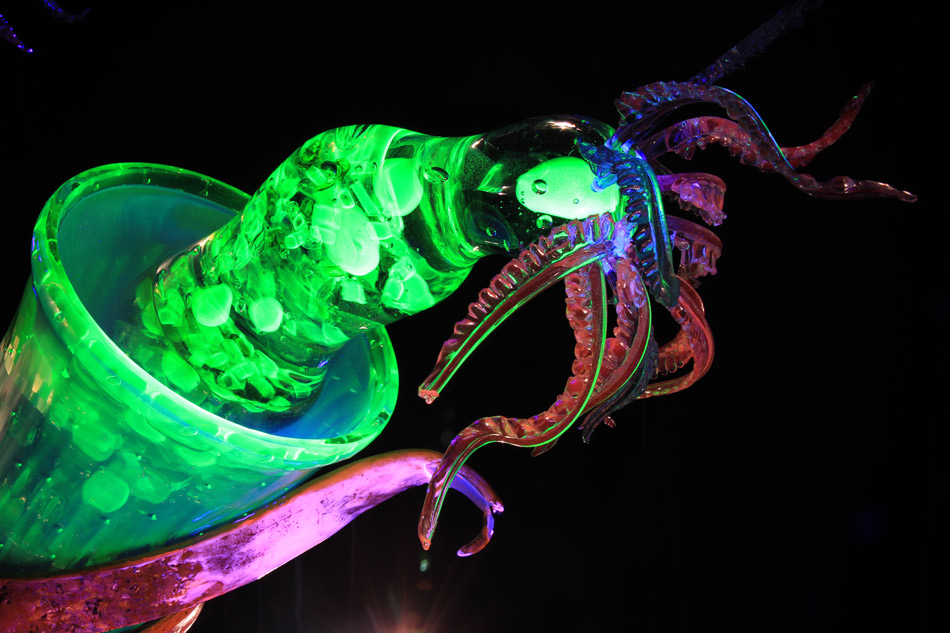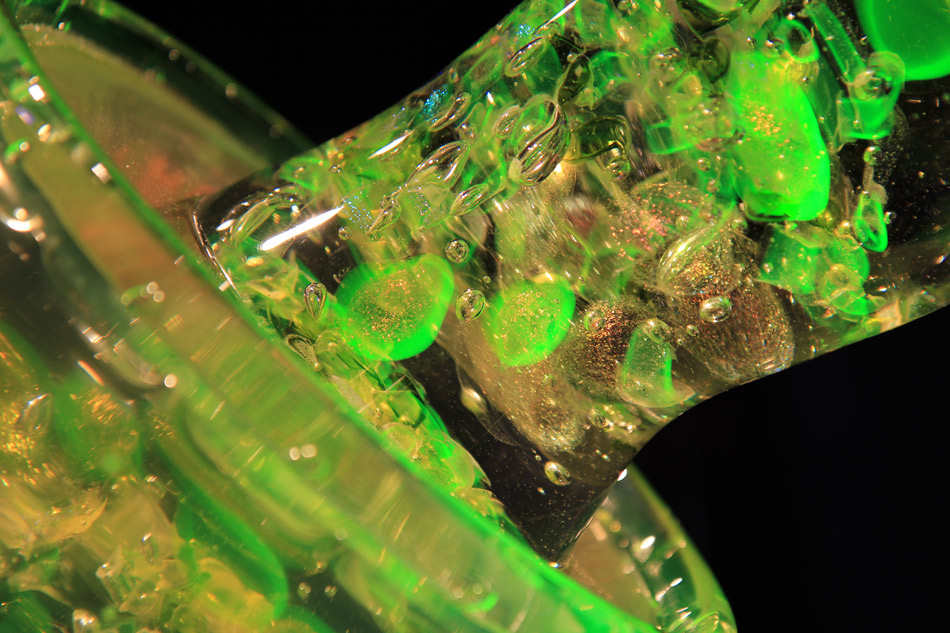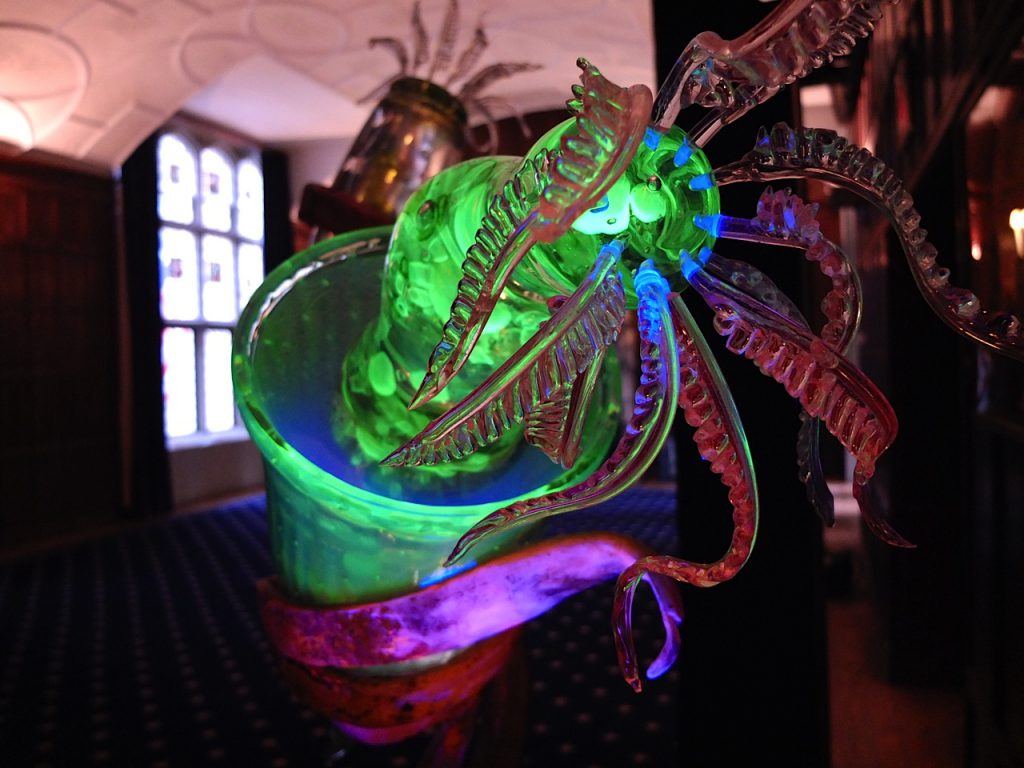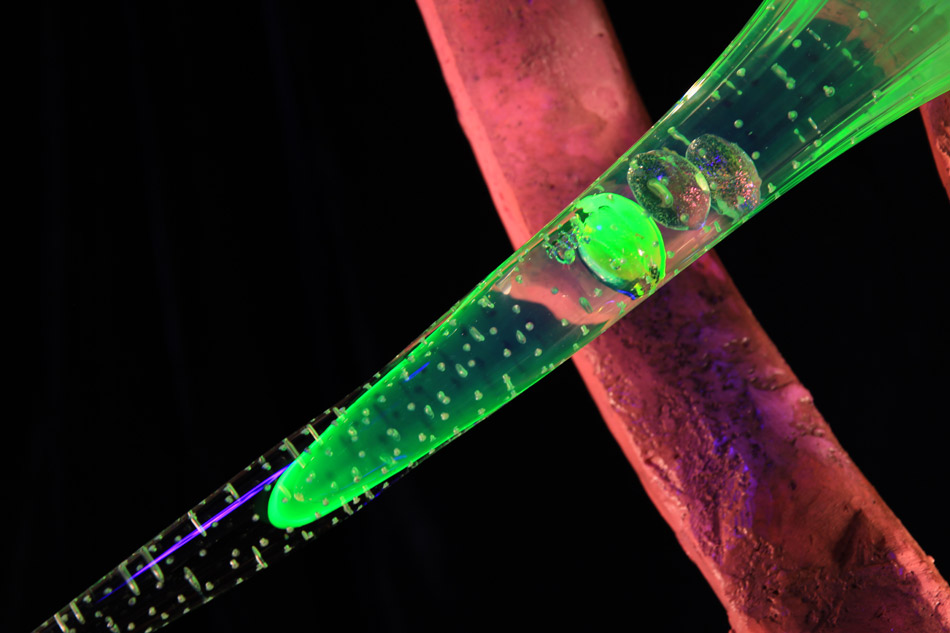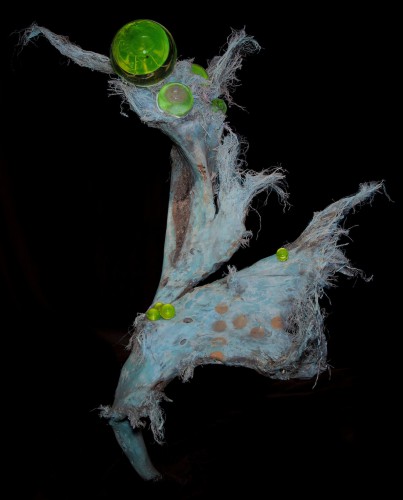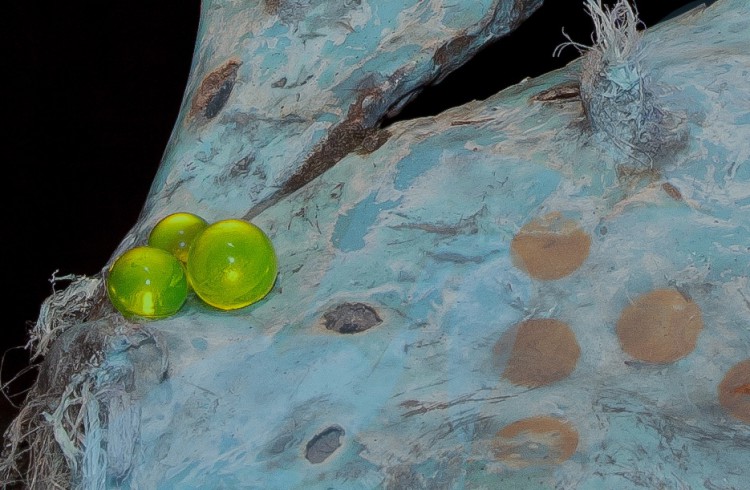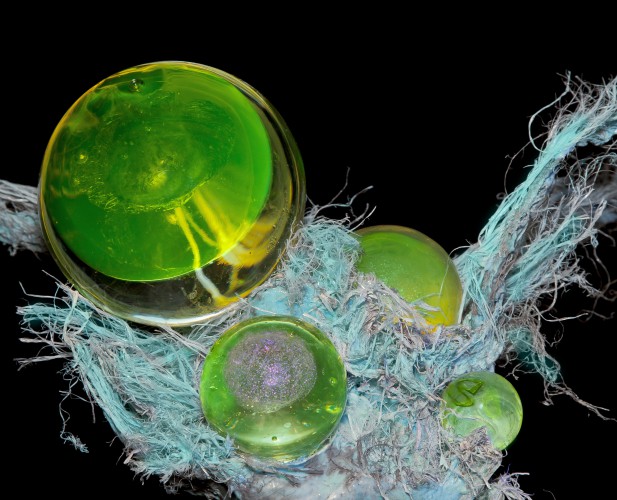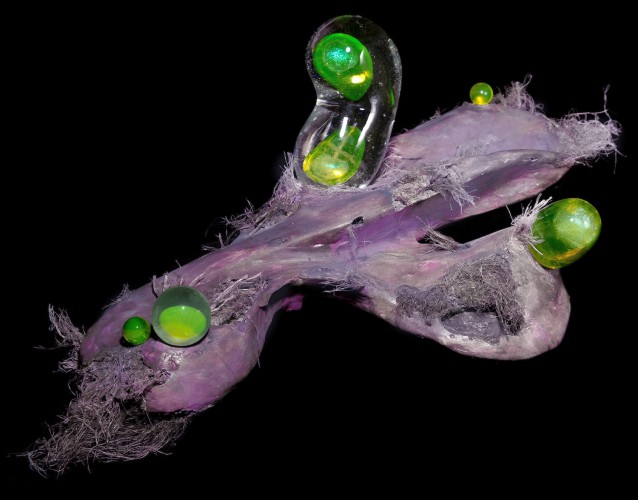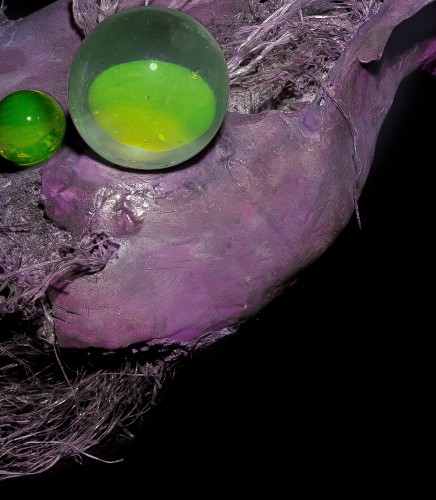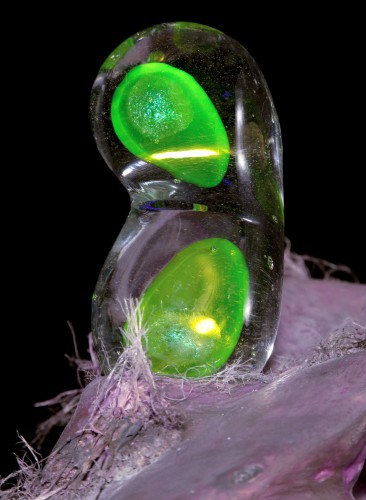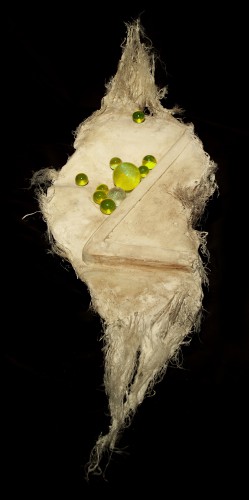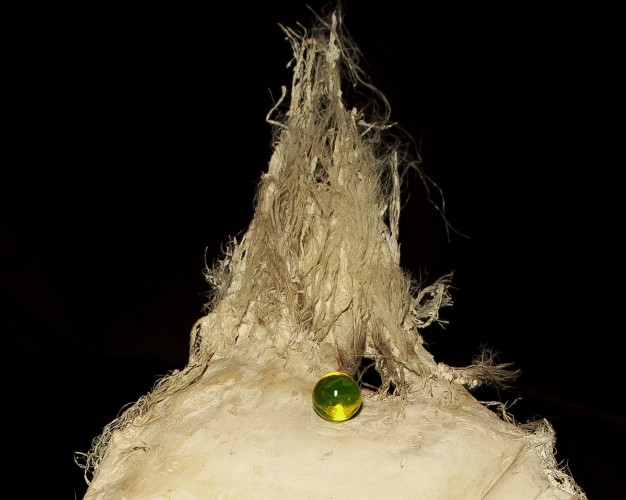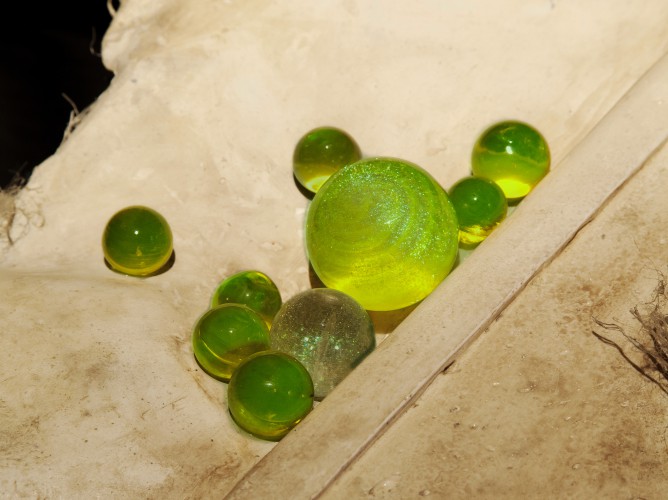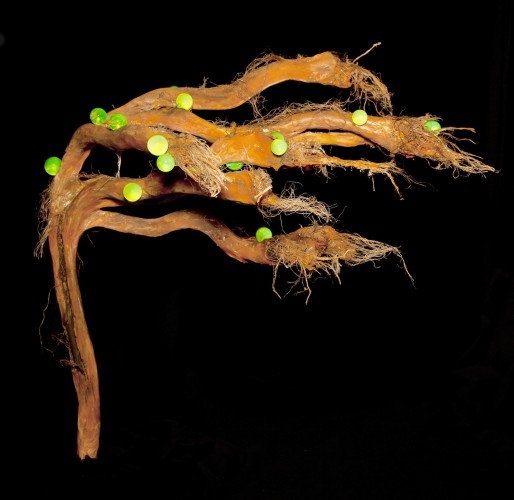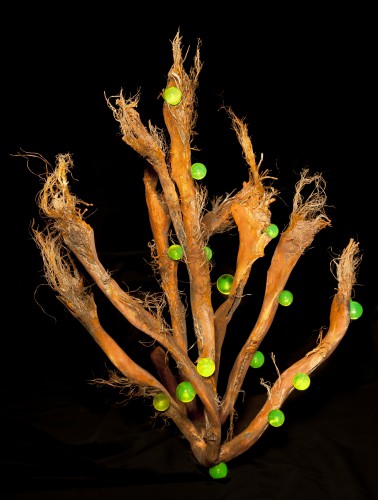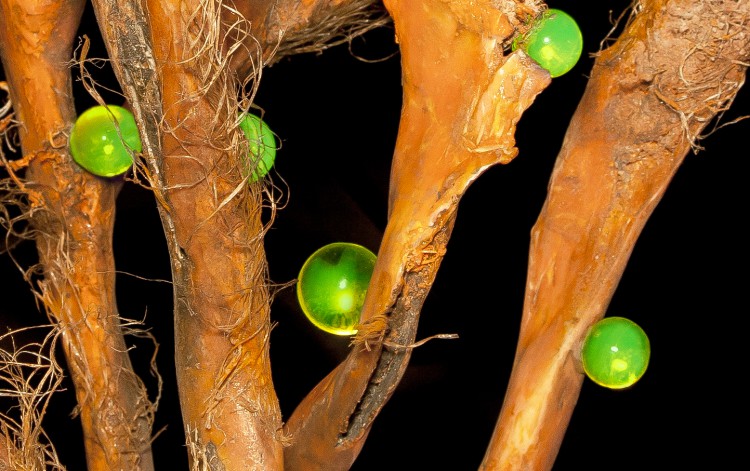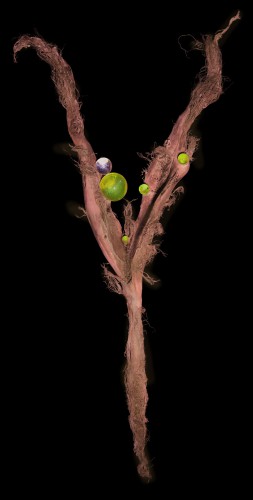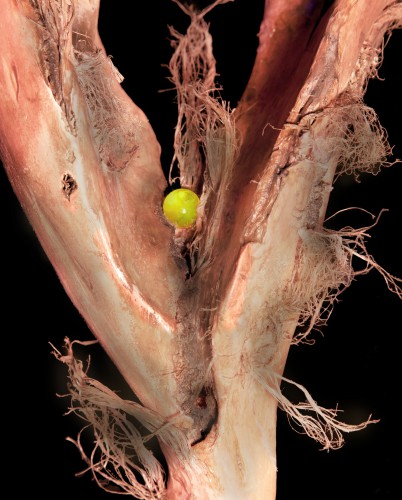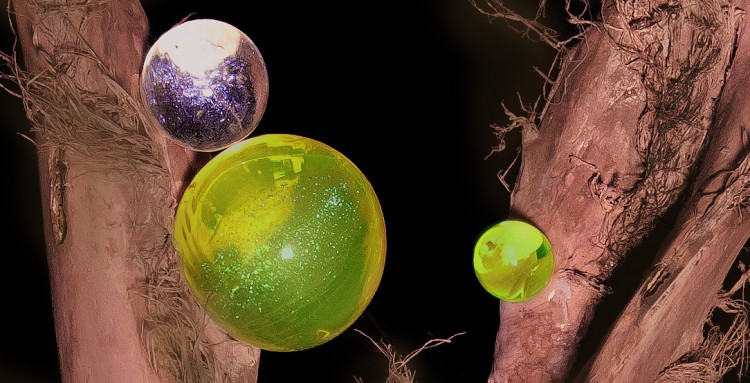Plankton plays a crucial role in regulating our planet’s atmosphere.
These microscopic creatures produce half the world’s oxygen. La Bohème: Portrait of An Ocean in Peril, is a series of sculptures dedicated to the importance and impending peril of these vital organisms.
To create this body of work, the artist collected plankton samples from waters around the globe. The first samples were collected February-March 2011 off the coast of Chile aboard the schooner Tara Oceans. The contents of these samples revealed an alarming truth; not only did the samples contain the delicate otherworldly forms of plankton, but also shreds of sunlight-degraded plastic. This discovery inspired a series of sculptures that resemble surreal beings from an alternate universe, but are in fact depictions of oceanic plankton entwined with plastic. The conclusion is a new awareness–that our fate is intimately linked with that of our oceans.
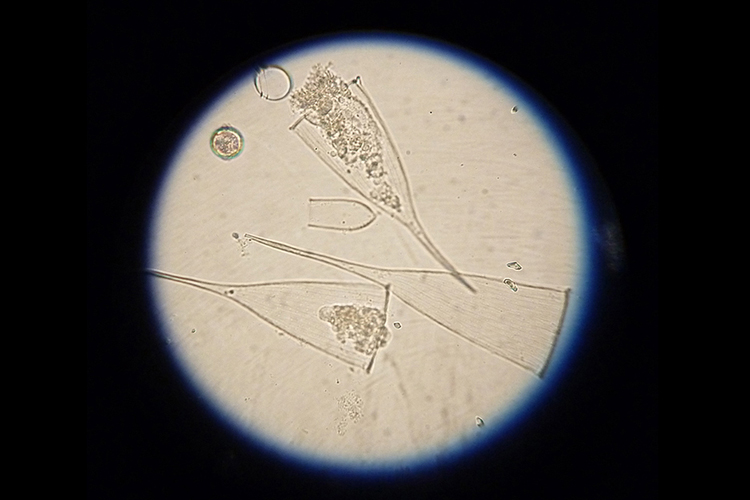

This series of sculptures is a follow-up to La Bohème, Series I. During her time on the research vessel Tara Oceans, Haseltine collected water samples from oceans all over the world. To her dismay, all of the samples contained bits of sunlight-degraded plastic which were covered in plankton. The sculptures in La Bohème, Series II are based on the images she saw under the microscope. To create these sculptures, the artist collected bits of plastic debris from outside her studio in DUMBO, Brooklyn on the edge of the East River in New York. Based on the incredible array of types and colors of plastic refuse, Haseltine created a series of sculptures depicting the microscopic pieces of UV-degraded plastic with plankton inspired by what she saw in her water samples. The sculptures are constructed with plastic remnants and hand-blown uranium-infused glass. With the plastic’s filthy, frayed texture contrasting with the slick, glowing surface of the glass, they are reminiscent of hybrid creatures, both man made and natural. These sculptures inspire certain questions to arise: Will plankton evolve to consume the cross-linked hydrocarbons that compose plastic (much the same way it eats up oil spills) or will plastic degraded in the ocean’s water combine for an unfortunate accident of the Anthropocene Age that wreaks permanent destruction?

